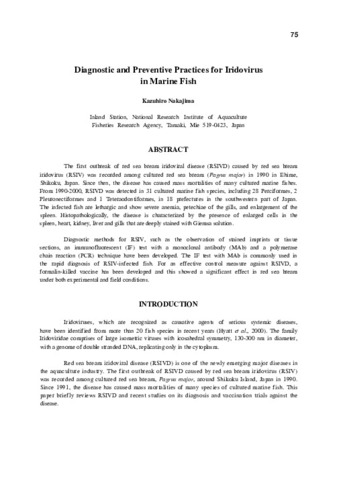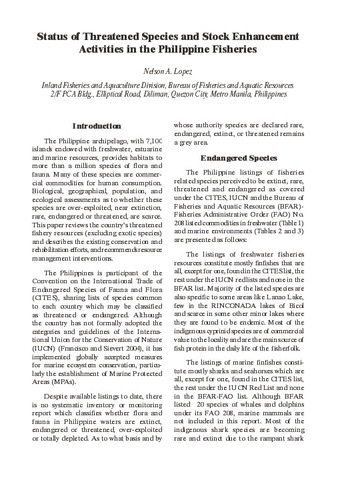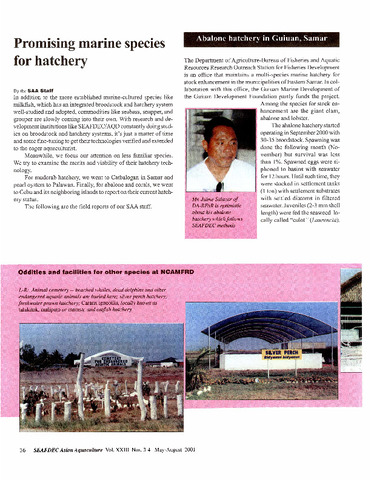Diagnostic and preventive practices for iridovirus in marine fish
Share
Abstract
The first outbreak of red sea bream iridoviral disease (RSIVD) caused by red sea bream iridovirus (RSIV) was recorded among cultured red sea bream (Pagrus major) in 1990 in Ehime, Shikoku, Japan. Since then, the disease has caused mass mortalities of many cultured marine fishes. From 1990-2000, RSIVD was detected in 31 cultured marine fish species, including 28 Perciformes, 2 Pleuronectiformes and 1 Teteraodontiformes, in 18 prefectures in the southwestern part of Japan. The infected fish are lethargic and show severe anemia, petechiae of the gills, and enlargement of the spleen. Histopathologically, the disease is characterized by the presence of enlarged cells in the spleen, heart, kidney, liver and gills that are deeply stained with Giemsa solution.
Diagnostic methods for RSIV, such as the observation of stained imprints or tissue sections, an immunofluorescent (IF) test with a monoclonal antibody (MAb) and a polymerase chain reaction (PCR) technique have been developed. The IF test with MAb is commonly used in the rapid diagnosis of RSIV-infected fish. For an effective control measure against RSIVD, a formalin-killed vaccine has been developed and this showed a significant effect in red sea bream under both experimental and field conditions.
Suggested Citation
Nakajima, K. (2002). Diagnostic and preventive practices for iridovirus in marine fish. In Y. Inui & E. R. Cruz-Lacierda (Eds.), Disease Control in Fish and Shrimp Aquaculture in Southeast Asia - Diagnosis and Husbandry Techniques: Proceedings of the SEAFDEC-OIE Seminar-Workshop on Disease Control in Fish and Shrimp Aquaculture in Southeast Asia - Diagnosis and Husbandry Techniques, 4-6 December 2001, Iloilo City, Philippines (pp. 75-79). Tigbauan, Iloilo, Philippines: SEAFDEC Aquaculture Department.
Subject
Related items
Showing items related by title, author, creator and subject.
-
Status of threatened species and stock enhancement activities in the Philippine fisheries
Lopez, Nelson A. (Aquaculture Department, Southeast Asian Fisheries Development Center, 2006)The paper provides the lists of fisheries related species perceived to be extinct, rare, threatened and endangered as covered under the CITES, IUCN and the Bureau of Fisheries and Aquatic Resources (BFAR)-Fisheries ... -
Status of marine fisheries resources in Myanmar waters: Estimates from bottom trawl survey
Thapanand-Chaidee, T.; Myint Pe, U.; Chanrachkij, Isara (Faculty of Fisheries, Kasetsart University, 2010)Sixteen survey operations in the waters of Myanmar were conducted by the research vessel MV SEAFDEC 2 during February to March 2007. After 15 h 40 min of overall towing time, a total of 1,434.4 kg of catch was classified ... -
Promising marine species for hatchery
Surtida, Marilyn B.; Españo, A. J.; Adan, R. I. Y. (Aquaculture Department, Southeast Asian Fisheries Development Center, 2001)





